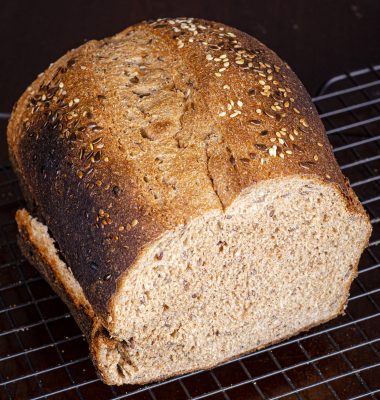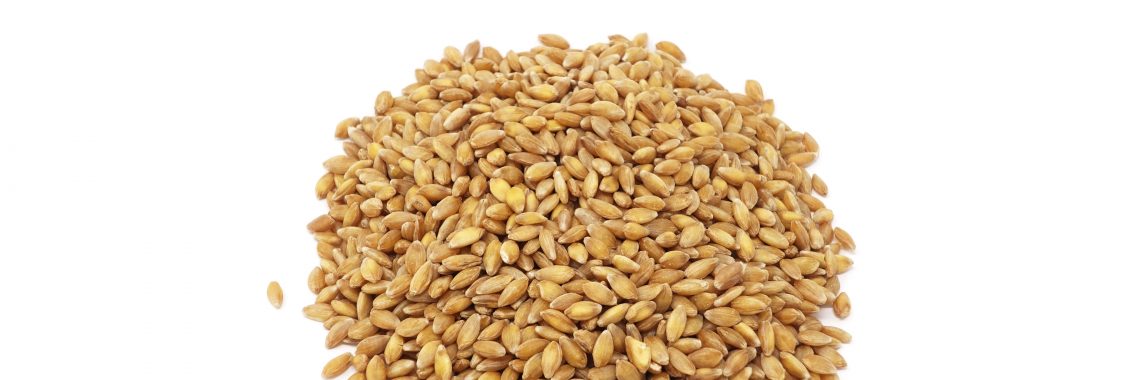Market data forecasts show ancient grain food markets could expand 35 percent in four years
Einkorn, emmer, and spelt are ancestors of modern wheat. These “ancient” cousins have some unique nutritional and flavor characteristics, and many people find them easier to digest than modern wheat.
Some varieties thrive in low-input systems, giving them good potential as an alternative crop for Wyoming farmers.
Remember Otzie the Iceman who showed up well-preserved in a glacier in the Alps? He is thought to have died around 3300 BCE, and in his stomach were the remains of a meal that included einkorn.
Worland was home to an emmer breakfast food factory around 1915 under the ownership of Professor B.C. Buffum (former director of the Wyoming University state experiment station and a Worland native). An article published in 1911 in The National Magazine about Buffum’s work claims that “improved winter Emmer…is surpassing even the best wheat as a food for civilized man.”
A team from the University of Wyoming is working with farmers around the state to learn to grow some of these ancient grains and develop markets. Their hope is these grains will thrive in Wyoming’s arid climate and produce profitable yields with less water and fertilizer than modern wheat and barley.
A report from Market Data Forecast predicts the “ancient grains” food market will expand at a growth rate of over 35 percent to $6.3 billion by 2024, and that more than 20 percent of shoppers are willing to pay a premium for products that contain “Ancient grains.” This could be good news for Wyoming farmers!
Nutritional Benefits
Research has shed light on some nutritional benefits of ancient grains. Ancient wheat varieties are higher in polyphenols. Polyphenols have antioxidants, which help inhibit oxidation of cells to reduce free radicals. Polyphenols may also improve digestion or reduce digestive issues. Einkorn and spelt were found to be richer in carotenoids, which is an antioxidant that can lower inflammation. Phytic acid, which impairs the absorption of iron, zinc, and calcium, was found to be 40 percent lower in spelt than modern wheat, thus making it easier for people to absorb those minerals.
Ancient wheats were also found to maintain satiety, of a feeling fullness, for longer periods of time compared to modern wheats. Ancient grains have a low glycemic index value, which may benefit those living with diabetes and may help prevent type 2 diabetes. They may also have cardiovascular benefits as einkorn was found to have approximately 50 percent more monounsaturated fatty acids (MUFAs) and 21 percent less saturated fatty acids than modern wheat.
Emmer, einkorn, and spelt were also found to have increased levels of magnesium, phosphorous, selenium, and zinc compared to modern wheat.
Einkorn is generally less immunoreactive than modern wheats, which may lessen the symptoms of those with chronic digestive diseases such as irritable bowel syndrome. These ancient wheats are not gluten free.
In their whole grain form, ancient wheats have a slightly lower dietary fiber content than modern wheat. Like modern wheat, ancient wheats can also be processed to remove the bran and germ making them refined, but you also miss out on the nutritional benefits of whole grains when doing so. Whole grains are higher in fiber, phytonutrients, antioxidants, B vitamins, and healthy fats.
Although ancient wheat varieties may have some nutritional benefits, concluding they are superior to all modern counterparts in reducing chronic disease risk is not possible. Considering some of the beneficial components of ancient grains, it will be exciting to see more research on this topic and how Wyoming can produce, and utilize, this resource.

Easy Whole Grain Spelt Bread with Flax and Sesame
Makes: 1 loaf
Ingredients
4½ cups whole grain spelt flour
¼ cup flax seeds
2 Tablespoons sesame seeds
2 teaspoons active dry yeast (1½ tsp at 7,200 feet)
2 teaspoons salt
1¾ cups water room temperature
2 Tablespoons honey
Instructions
In a large bowl whisk together spelt flour, flax, and sesame seeds, yeast, and salt until combined.
Add water and honey and stir until a dough starts to form. Turn out on a floured surface and knead into a firm dough ball. Alternatively, you can make the dough in a stand mixer with a dough hook attachment.
Place the dough into a clean bowl, cover with a dry kitchen towel, and let it rise until doubled in size (about 90 minutes).
Lightly grease a loaf pan (9×5 inches). Turn the risen dough out onto a floured surface and form into a loaf shape. Place the dough in the loaf pan seam side down. Sprinkle the top with sesame seeds. Make a few diagonal cuts across the loaf surface. Cover and let rise 30 minutes to 1 hour. The loaf should look obviously bigger than before but doesn’t exactly have to be doubled in size.
Preheat oven to 450°F. Bake the spelt bread loaf for about 30 minutes until the top is golden brown and crusty. Let the bread cool in the pan for 10 minutes, then turn out onto a wire rack to cool fully.
Tightly wrapped spelt bread loaves keep for about 4 days at room temperature. You can also wrap it airtight and freeze for later.
Recipe Tester’s Notes
The loaf in the photo was baked at 7,200 feet. If you are baking at a higher altitude, reduce yeast to 1½ tsp. The dough was more spongy than firm. This is a hearty bread. We enjoyed it freshly baked, toasted, and in grilled cheese sandwiches. — Tanya Engel
(Recipe source: leelalicious.com/easy-whole-grain-spelt-bread-recipe-with-flax-and-sesame/)
Shelley Balls is a University of Wyoming Extension Cent$ible Nutrition Program educator in Lincoln County, and Caitlin Youngquist is an extension educator based in Washakie County and serving northwest Wyoming. Balls can be contacted at (307) 885-3132 or sheap@uwyo.edu. Youngquist can be reached at (307) 347-3431 or cyoungqu@uwyo.edu.





